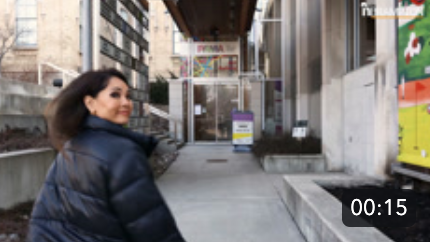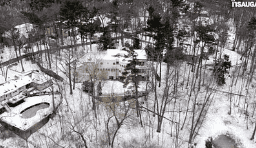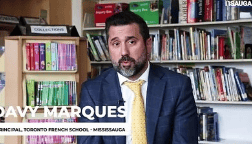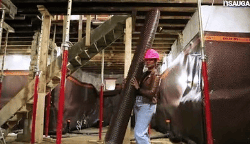Do You Know What’s Happening with the $1.4 Billion LRT Coming to Mississauga?
Published August 25, 2017 at 9:58 pm

The Metrolinx Hurontario Light Rail Transit project (more colloquially known as the LRT) is moving forward. In fact, it’ slated to break ground sometime next year.
Although the incoming Hurontario LRT has been controversial (especially in Brampton, where it is not yet known where the route will go beyond the Shopper’s World area), it is a reality that both cities will be facing soon (perhaps with some fanfare). Recently, the Ontario government announced that it has reached “a major milestone” in the LRT project, as the province has released a Request for Proposals (RFP) to design, build, finance, operate and maintain the new LRT line.
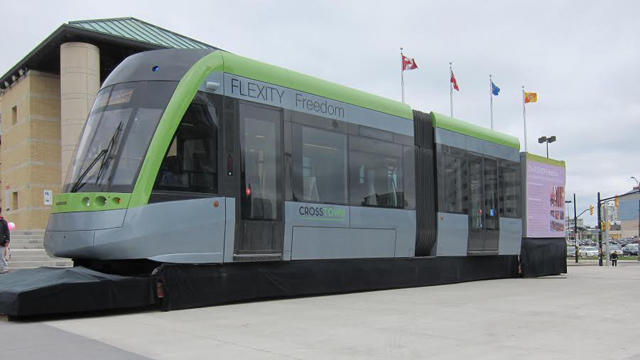
The three teams shortlisted for the Hurontario LRT project will submit their proposals to Infrastructure Ontario and Metrolinx later this year. The contract is anticipated to be awarded in 2018. The teams include Hurontario Light Rail Connection Partners (HLCP), Mobilinx and Trillium Transit Partners.
Shortly before that announcement, we learned that part of the LRT in Port Credit will be underground and that a civic plaza will sit above it at ground level.
Alongside that big announcement, we also learned that the highly-anticipated project is moving into the next phase of the procurement process. The City of Mississauga said that a staff proposal for additional design refinements and corridor enhancements that go beyond the initial project vision were included in a recent report.
“We are excited to reach this next stage of the Hurontario Light Rail Transit Project,” said Mayor Bonnie Crombie. “The design refinements and enhancements staff brought forward are placemaking opportunities that link to key downtown destinations to achieve a civic identity and sense of place. The proposed additional municipal infrastructure is an opportunity to complete work efficiently and good use of our resources. The Hurontario LRT is building and connecting our city and ensuring it remains competitive and offers our residents efficient and modern transit.”
For those who are unaware, the Hurontario LRT project includes approximately 20 kilometres of new dedicated rapid transit between Port Credit GO Station in Mississauga and Gateway Terminal in southern Brampton, with 22 stops and connections to GO Transit’s Milton and Lakeshore West lines.
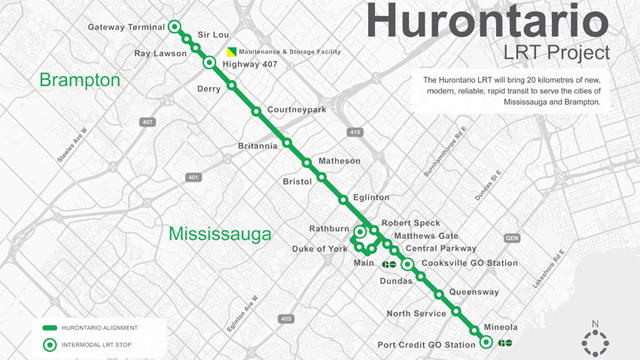
“The Hurontario Light Rail Transit Project is a key part of our city’s future and building the complete city where people want to live, invest and open up a business. City staff has worked closely with Metrolinx to prepare this project for procurement,” says Mississauga Mayor Bonnie Crombie. “We are continuing to work with our partners to bring much needed rapid transit to Hurontario…The LRT is a game changer for Mississauga and will ensure the Hurontario corridor grows in a sustainable way. We look forward to further milestones and progress of this important project that will connect our city and ensure it remains competitive and offers our residents efficient and modern transit.”
Ideally, LRT—one of the most monumental infrastructure projects Peel has seen in recent years—will provide commuters with a travel option that will cut travel times and help manage congestion across the Greater Toronto and Hamilton Area.
The Hurontario LRT project is part of the largest infrastructure investment in Ontario’s history and the province is providing $1.4 billion to build it in Mississauga and southern Brampton (Brampton famously turned down additional funding to carry the route further down Main Street into the city’s downtown core).
As far stops in Mississauga go, the focus on design is important, as residents will likely respond more favourably to stations and stops that are innovative, useful and attractive. Since construction will no doubt create hardships for numerous residents and business owners (you do have to crack eggs to make an omelette), it’s important to reward patience with good design.
The city says it’s been working with Metrolinx on refining the reference design “to address localized concerns prior to the next phase of the procurement process.”
“Before Metrolinx and Infrastructure Ontario identify a successful bid team, an agreement will need to be in place with the City of Mississauga to address the detailed aspects of project delivery and long-term operations,” said Joe Perrotta, Director, City of Mississauga LRT Project Office. “The additional municipal infrastructure being proposed can be integrated with the overall procurement process. Separate budget approvals will be required through the 2018 Budget.”
The design refinements and proposed corridor enhancements include:
• Review of the Port Credit and Cooksville HuLRT stops to improve integration opportunities to the GO rail network
• Maintaining paid on-street parking in the Downtown Mississauga areas with the HuLRT, where appropriate
• Developing an enhanced corridor design for Duke of York Boulevard in addition to reconfiguring the track design to a centre roadway configuration
• Addressing constraints at the Highway 403 crossing with the proposal for a new separated HuLRT structure
• Maintaining additional on-street MiWay capacity at the City Centre Transit Terminal
• Ensure consideration for a context sensitive design adjacent to the Britannia Church and the Britannia Farm Lands
Metrolinx identified a Public Realm Amount (PRA) of approximately $10.6 million to be used towards enhancements for the Hurontario corridor, while the city’s capital budget also identified up to $25 million in funding for related LRT project enhancements.
According to the city, staff–working through the Metrolinx design process–have identified potential corridor enhancements and upgrades that will, ideally, please the overall community. would benefit the overall project and communities.
The staff report, Hurontario Light Rail Transit Project Update: Metrolinx Project Procurement, includes $1.61 million in additional funding. Final approval of the staff report will be on the July 5 council agenda.
The list of additional municipal infrastructure projects include:
• Incorporating municipal storm sewer (new and upgrades)
• Incorporating uninterrupted power supply or backup systems at all or primary signalized intersections
• Including noise walls that are not a requirement of the HuLRT Project but still meet the criteria through existing municipal policy
• Protecting for variable message sign systems within stop platforms to communicate MiWay information
As for who will build the LRT vehicles, that remains to be seen.
The LRT project includes three stops in downtown Mississauga and also boasts connections Mississauga MiWay, Brampton Transit, Brampton Zum, the Mississauga Transitway and a maintenance and storage facility for the light rail vehicles at Highway 407.
Construction is expected to begin next year and wrap up in 2022.
insauga's Editorial Standards and Policies advertising

